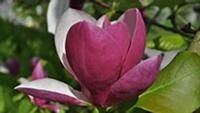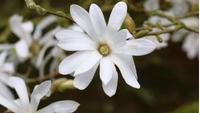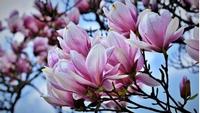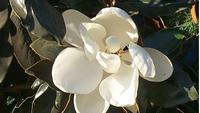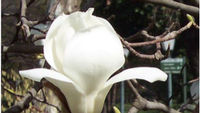Magnificent Magnolias
Is there anything more glorious than a magnolia in full bloom? These trees aren't only gorgeous – they're ancient. In fact, magnolias are among the oldest tree species in the world, with fossil records dating back 60 million years. Today we use them as accent trees, for shade, and the smaller cultivars even make nice hedges. Depending on the species, magnolias are deciduous or evergreen, with flowers perched singly at or near the tips of branches. The leathery, cone-shaped fruits have many large, fleshy seeds.
Growing conditions
Magnolias prefer full sun to light shade in moderate to warm climates. In summer-dry climates like Marin's, they benefit from a little afternoon shade in exposed inland locations. Avoid windy areas, because strong winds can damage flowers or even snap off branches. Magnolias prefer moist, acidic soil but will perform in less ideal soil. Clay, loam, or sandy soil is fine so long as it drains. Although it takes deep, thorough, and regular water to get magnolia trees established, mature trees can become somewhat drought tolerant. The best time to plant a deciduous magnolia is in early winter when it's dormant.
Bloom time
Depending on the species, magnolias bloom between February and June. Late-blooming magnolias include the evergreen Oyama magnolia (Magnolia sieboldii) and the extra-large, glossy-leaved southern magnolia (Magnolia grandiflora). Some deciduous magnolias are the first trees to bloom, unfolding sublime pastel pink flowers on naked branches in late winter and early spring before leaves appear. The best example of this is the popular saucer magnolia (Magnolia x soulangeana), which adorns many gardens throughout Marin.
Pruning
Most magnolias grow at a slow to moderate rate. If they have ample room to stretch out, giant evergreen magnolias do not require much or any pruning. Allow their large, rounded shape to naturally evolve. If you do need to prune, wait till late summer or right after flowering has ended. Prune deciduous magnolias lightly as well, to avoid altering their attractive sculptural shape.
Where to see magnolias
The San Francisco Botanical Garden has a collection of 200 magnolias that explode into bloom January through March. This is an excellent way to experience the glory and grandeur of these spectacular trees. Or, if you can't see them in person, check out their video with drone footage.
Here are five popular magnolias.

